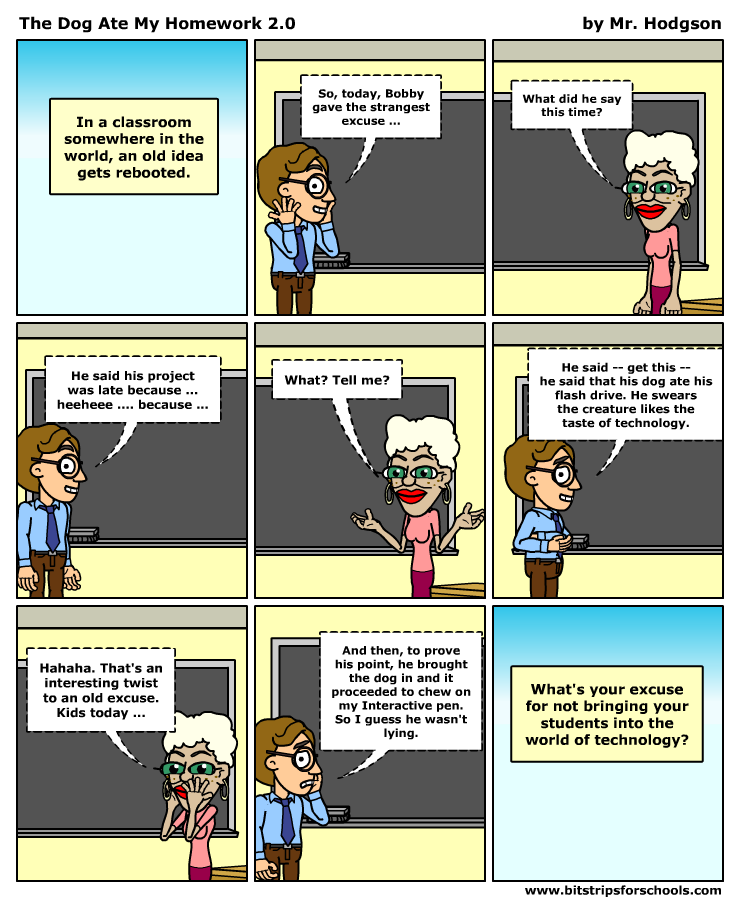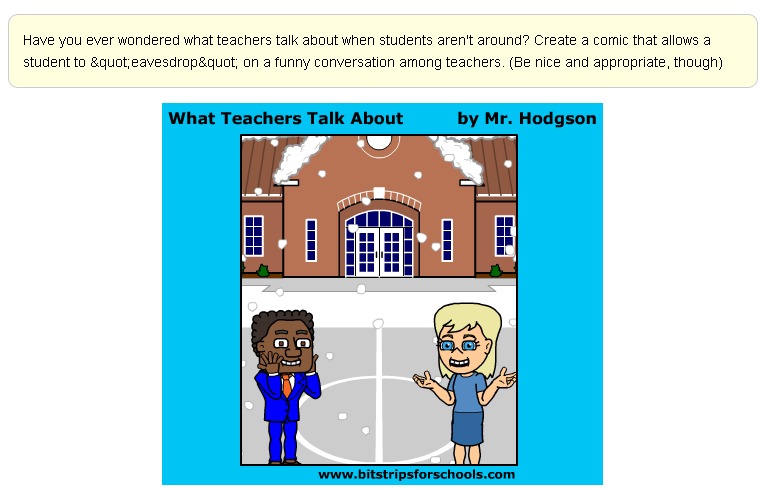I am always interested in the various online, but protected, sites offering students and teachers a way to make webcomics. I use ToonDooSpaces with my students, and I love the variety of artwork and other options at ToonDoo, but I keep an eye out for other sites, too.
Recently, the National Writing Project finagled a deal with Bitstrips to let NWP teachers give the Bitstrips for Schools a trial run, so I jumped right in (big surprise) and started up an account, established a “classroom” and began making a comic. Later, I created an “activity” that will show up in any student account that I create.
Some observations:
- The Bitstrips site is pretty intuitive to use — no major hurdles in the set-up as an administrator;
- I like that the teacher can set up moderation of all student comics (or not).This could be a good comfort level for teachers just making their way into an online environment;
- The version I am using seems to have a limited number of set characters, and they are all people. I needed a dog. I could not find a dog. Not anywhere. I wonder if there are more options if you are a playing customer. I would hope so.
- But, you can create your own characters, although it seems like they are mostly people. Perhaps Bitstrips is just very people-orientated.
- I love that teachers can set up “template” comics as part of “activities” and then put those into the “classroom” for students to work from. The students click on a teacher template and then begin making their own versions. Nice.
- I liked having access to other “activities” from other teachers in the Bitstrip network. I could easily borrow their activities and assign them to my class, which is pretty cool sharing. While some activities are obviously specific to a certain lesson for a certain teacher, a number of them are not. There were activities around reflections on reading, character development, use of dialogue and more.
- I really liked that I could keep adding rows of boxes, or frames, so that I could build a story longer than a traditional one or three-frame comic. This ability to add rows allows a user to create a graphic story, rather than a punch-line comic.
- Unless I missed it, I could not find a way to grab embed code from my “walled comic garden” to share work with the outside world. One thing I like about ToonDoo is that while students work behind the virtual walls, I can share their comics and e-books at our public blog site or wherever.
- The cost for a Bitstrips license seems a bit steep and for me, with 80 students, I could not justify it. ToonDoo is much more manageable because it is priced on a per-student/per-month basis. In fact, given that I can only add 40 students, I probably won’t bring it to my classroom (but I may use it for a Comic Summer Camp program).
There is a 14-day trial that any teacher can do with Bitstrips to test-drive the site, which I mostly liked for its interface and useability and I would recommend Bitstrips as an option for teachers wondering about dipping their toes into the world of webcomics.
Here is a comic that I created (bigger version at Flickr):

And here is an activity that I set up (bigger version at Flickr):

Peace (on the virtual funny pages),
Kevin

One thought on “Trying out Bitstrips for Schools”
Comments are closed.